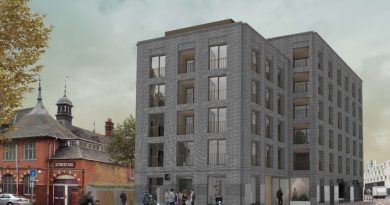More delays to Greenwich borough Community Infrastructure Levy reform
Greenwich Council are set to finally consult on reforming how much they collect from developers eight years after originally planned.
The borough have sat near the bottom of all London authorities and missed out on millions in revenue for almost a decade after setting very low levels of Community Infrastructure Levy applicable on developers when they build in the borough.

Though even now it appears council officers are still missing deadlines with a May 2023 target for signing off consultation falling back to July 2023.
Woolwich box
The borough was hampered by being forced to part-fund the Woolwich Elizabeth line station via CIL funds – which were introduced in 2015.
However, in the run up to CIL adoption in 2015 the council expected to raise more than £20 million before 2020 and pay off the station cost relatively quickly. They also committed to review rates in 2018.

Yet by 2018 it was clear they were far below expected levels of revenue. The rate chosen was one of the lowest in all of London, which was great for developers but less so for raising revenues for services in a time of central government cuts.
They even chose an extremely low rate in prime areas such as Greenwich town centre and areas beside the Thames. That was despite a Viability Assessment leading up to 2015 clearly stating they could go much higher in such prime areas.

That also never revised rates in 2018 as stated in 2015 – and in the process were losing out on millions of pounds in potential revenue.

This all reached a nadir in recent years when they fell to the very bottom of all London boroughs for collecting revenue.

In recent years they’ve lagged equivalent London boroughs by up to tens of millions in collection totals.

This lack of money is a key factor in the authority continuing to pass blame when it comes to funding numerous services including transport, often deflecting to a cash-strapped TfL. We see it pretty much every month at Highways Committee meetings as well as responses to petitions.
Not our fault. It’s down to TfL.
Though it’s not just transport but community centres, health, education and so much more that CIL can assist. Next week Southwark will sign off millions in funding.
It’s easy to look back in hindsight, and Greenwich could perhaps be excused for setting low rates in 2015 as CIL was a new funding mechanism. There is, however, little excuse for not revising by 2018 when failures were already evident.

For it to then take a further five years is inexcusable. If rates had been revised Woolwich station box would be long paid off and additional funding would be available for numerous projects and services.
Throughout this time we’ve seen issues such as misleading reports presented to councillors offering a false comparison between Greenwich and Lewisham boroughs by not using the same time period for analysis.

There’s also annual reports which saw those emanating from Greenwich contain far less information than most other boroughs. It all suggested a council way out of its depth and fall below accepted levels seen in the vast majority of London councils.
One key absence in Greenwich was a list of demand notices issued to developers for payment. This was normal for the vast majority of London councils to include in their reports. Not in Greenwich.
As it is, any reform now is not going to happen until 2024.
Running a site alone takes time and a fair bit of money. Adverts are far from enough to cover it and my living costs as a private renter.
You can support me including via Paypal here Another option is via Patreon by clicking here You can also buy me a beer/coffee at Ko-fi here There's also a Facebook page for the site here Many thanks





